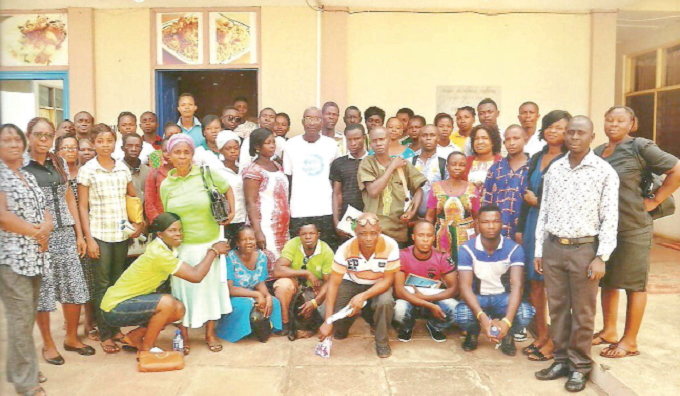
Health practitioners express worry over poor immunisation attitude in Ho
Immunisation of children under five against diseases is one of the most important public health interventions against preventable diseases and childhood mortality.
Advertisement
It, therefore, becomes worrying when mothers become adamant in ensuring that their children receive all the necessary vaccines to protect them against disease outbreaks.
Low immunisation coverage in Ho
The poor attitude towards immunisation in Ho is gradually becoming an albatross on the necks of health practitioners in the municipality.
The fear of the municipal health directorate is that if this behaviour continues, there could be an outbreak of diseases among children which as a matter of fact could have been prevented.
It has been observed that the majority of mothers only have interest in immunising their children within their first year of life (Penta 3 vaccine) but fail to complete the circle in the second year of life (2YL) for their babies to be fully protected.
A major second-year life immunisation campaign has, therefore, commenced in the municipality to get all mothers who have children under five years to ensure their babies have undergone the full circle of vaccination.
The campaign initiated by a Non-Governmental Organisation, Humanity and Nature Trust in collaboration with the Municipal Health Directorate and the Ghana Red Cross Society, will have 180 community-trained champions serving as gateways to get all mothers within the municipality to immunise their children.
With the slogan ‘From Start To Finish’, the champions are to get to the key messages such as ‘Childhood vaccines are safe and effective. They protect children from vaccine -preventable diseases’, Every child should receive the following essential health services during their second year of life, thus a second dose of measles-rubella vaccine, meningitis A vaccine and any previously missed vaccines dose’, among others.
Target of immunisation for Ho municipality
According to the Municipal Disease Control Officer, Mr Christian Gohoho, the target for the five-in-one vaccine (Penta 3) was 45 per cent for the first half of the year, however only 25 per cent has been achieved. Similarly for the 2YL vaccines, especially the measles rubella vaccine, the target had been 40 per cent for the first half, but they achieved 23 per cent.
The problem, he said, was that the parents did not know the danger they were putting their children through, hence the need for more awareness to be created.
‘Vaccines are safe to use, children must go through the full circle,’ he indicated.
Fortunately, despite the low immunisation coverage, there has not been a major disease outbreak in the municipality but there is no guarantee that the trend of ‘no outbreak’ can continue.
Confirmed cases of meningitis
The Municipal Health Director of the Ghana Health Services (GHS), Dr Senanu Djokoto, disclosed that there had been few recorded cases of confirmed measles and tetanus within the year.
The directorate, he said, was not satisfied that it recorded minimal number of cases since its aim was to eliminate all forms of preventable diseases, including deadly ones such as measles and meningitis.
‘It is very clear that if we travel on this path of low immunisation, we are going to get outbreaks of diseases that are preventable’.
‘We will, therefore, not wait till we record any outbreak. Our job is preventive. We will act to prevent it,’ Dr Djokoto emphasised.
The co-ordinator of (2YL), Dr Joseph Kwadwo Larbi, speaking to the Graphic, indicated that there had been a wrong perception that immunisation ends in the first year but there were vaccines for second year which included measles-rubella vaccine and meningitis.
Giving an analysis of last year’s coverage for measles, he said the first dose of measles received a 95 per cent (nine-month old babies), while the second dose was about 74 per cent (18-months babies), respectively, pointing to the fact that there had been a major gap between the two vaccines.
‘We want to narrow the gap and if possible close it. That is why we need the various stakeholders to help in the campaign’.
Thirteen killer diseases
Dr Larbi explained that the killer diseases had increased from six to 13, stating that ‘Immunisation does not end in the first year. In the second year we have a set of vaccines that are given and even if any of the babies misses the vaccine in the first year or second year there is opportunity up to five years to be vaccinated with the exception of vaccines against tuberculosis and diarrhoea’.
He said, “Health workers cannot do the job alone that is why we are involving volunteers in the communities to help organise community durbars on immunisation and undertake interventions to protect children under five years.”



